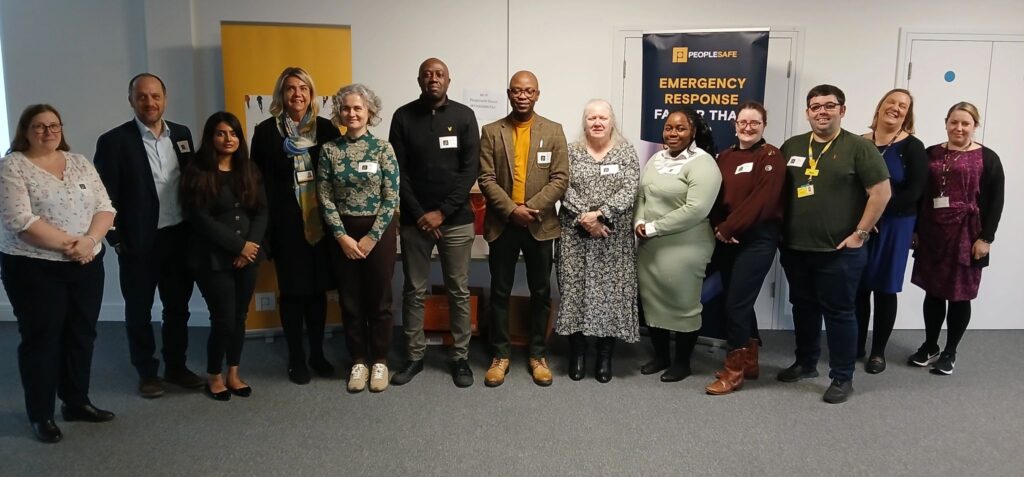Addressing Aggression and Violence in Housing
Aggression and violence against housing employees have surged in recent years, with UNISON’s community health and safety survey revealing that 47% of housing employees have experienced violence or aggression at work. This troubling rise is mirrored by a recent report that found a 132% increase in physical attacks on lone workers over the past three years.
This critical issue was the focus of a recent roundtable hosted by Peoplesafe, in collaboration with the Suzy Lamplugh Trust and supported by The Hyde Group. The event brought together health and safety leaders from across the housing industry in London and the surrounding areas to discuss how to effectively manage rising aggression, violence, and abuse towards housing employees.
These behaviours have serious consequences, negatively impacting staff wellbeing, creating financial and operational challenges, and potentially leading to legal risks. For those working alone, the isolation and lack of immediate support make this even more challenging.
The roundtable provided a platform to share experiences, challenges, and solutions that can better protect frontline workers and address these risks. Here are four tips for addressing rising aggression in housing associations from the event:
1. Real-life stories have the biggest impact
Getting people to use the lone worker technology they’ve been given is a common barrier, especially when staff become complacent.
Hearing first-hand experiences from peers can be game-changing in driving adoption. In an example given at the event, The Hyde Group saw a 30% increase in usage within days of sharing the real-life experience of an employee, showing that relatable examples can cut through resistance.
2. Training and knowledge are more important than just protective gear
PPE like stab vests and body-worn cameras might seem like obvious safety measures, but they can sometimes escalate situations rather than prevent them.
The preferred method shared by most attendees was equipping staff with the right skills to assess risk, read situations, and de-escalate conflicts before they turn dangerous. Knowing customers, estates, and how to handle difficult situations can make a significant difference in preventing incidents before they happen.
3. Complacency is a risk
Even the most routine interactions can take an unexpected turn when we start assuming they’re always safe. This mindset can cause subtle warning signs to be overlooked, making it easier for risks to escalate.
This is why dynamic risk assessments are key to overcoming complacency in high-risk environments. Nothing can replace the effectiveness of a dynamic risk assessment, which actively combats complacency by keeping staff engaged and ensuring they constantly evaluate potential hazards as they arise. This real-time approach allows employees to adjust to changing environments and situations quickly, ultimately reducing the chances of situations turning dangerous.
4. Evolving technology is reshaping employee safety
Lone worker technology has been essential in housing for more than 20 years, but advancing technology is removing barriers to adoption and making it easier than ever for organisations to prioritise the safety of their employees.
Innovations like APIs, which reduce administration and simplify data management by integrating with existing HR or Workforce Management platforms, roaming eSIMs, which help to ensure uninterrupted network connectivity, and mass notification technology are transforming how organisations keep teams safe and informed.
Rethinking Amber Alerts and Usage Metrics
A recurring topic of discussion at the roundtable was the reliance on Amber Alerts, as many housing associations still believe that employees must trigger them to demonstrate the use of their lone worker technology. Additionally, in the past, the police would not attend an alarm unless a full address and postcode were provided, making Amber Alerts essential for providing this information.
However, Amber Alerts can be time-consuming, often feel unnecessary and can be perceived by staff as just another box-ticking exercise. When genuine emergencies are infrequent, the perceived value of logging detailed alerts before every task diminishes, leading to frustration, non-compliance, or complacency.
Thankfully, advances in technology are helping to remove this need and make lone worker protection more user-friendly, adaptable, and effective.
With technologies like what3words now widely used by emergency services, there is no longer a need for pre-logged Amber Alerts to provide precise locations. That shift means lone workers can focus on performing dynamic risk assessments before each job, choosing how and when to use the features available to them.
Unlike some providers who measure engagement solely through Amber Alerts or voice memos, Peoplesafe enables housing associations to track usage in a way that reflects actual behaviour. This might include whether the device is switched on, whether a test alert has been sent, if real-time tracking is active, or if check-in timers are used. This flexibility removes the pressure to perform unnecessary actions, while still giving organisations the data they need to demonstrate effective usage and duty of care.
Conclusion
Overall, the discussions at the roundtable highlighted that managing aggression and violence in housing requires a multi-faceted approach. It’s not just about physical protection, but equipping staff with the right tools, skills, and support.
With the right measures in place, organisations can prevent risks and ensure everyone gets home safely at the end of the workday.
Watch the video below to hear more about the event:




